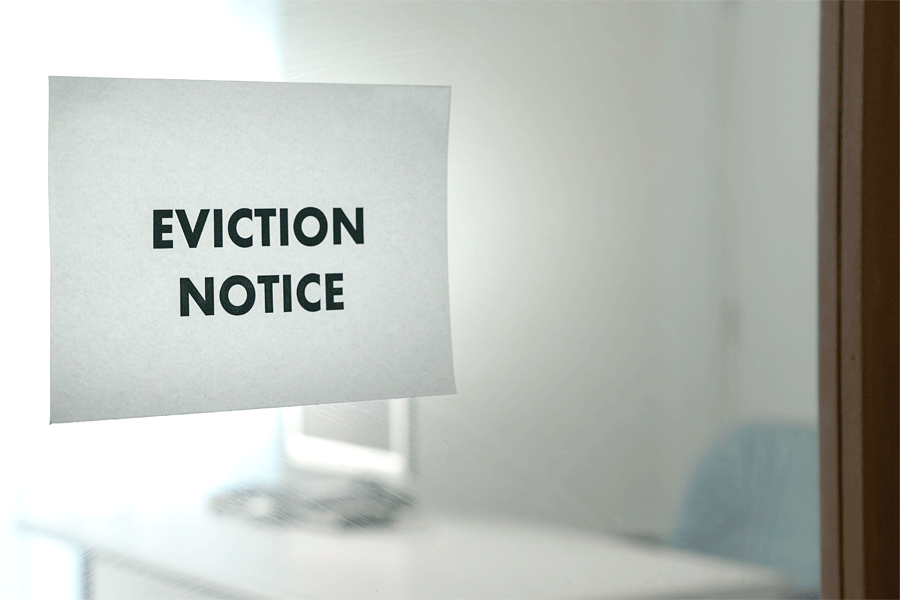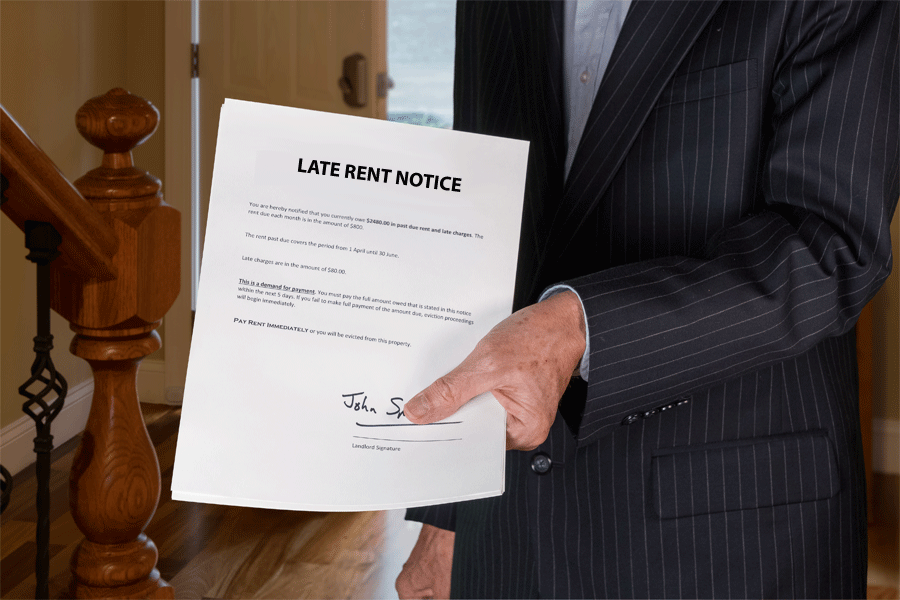Eviction refers to the civil process through which a landlord may legally remove a tenant from their rental property. The eviction process generally begins with a notice from the property owner (the landlord) that asks the tenant to remedy certain conditions. This includes the seven-day eviction notice, using a seven-day eviction notice form.
The seven-day eviction notice form is a document that allows a landlord or his representative to notify a tenant of the violation of a lease agreement.
The form compels the tenant to fix the specified conditions within the seven (7) days period, failure to which the landlord may file eviction proceedings through a court, commonly referred to as a Forcible Entry and Detainer, often abbreviated as FED.
When is it Needed?
In most cases, the seven-day eviction notice is needed when a property owner realizes that a tenant has violated the terms of their rental agreement. Eviction may occur when the said tenant fails to meet their tenancy obligations, including non-payment of rent, damages, breaching the terms of the lease/rental agreement, illegal activity on the rental property, if the landlord wishes to repossess their rental property, or due to other reasons permitted by the relevant state laws.
States Where Seven-Day Eviction Notice is Used
Eviction laws usually vary significantly by state and municipality. Therefore, landlords need to understand the laws that govern the use and issuance of the form in their relevant state to ensure they abide by the rules and avoid unnecessary lawsuits.
Free Downloads
Below is a list of different states where the seven-day eviction notice can be used:
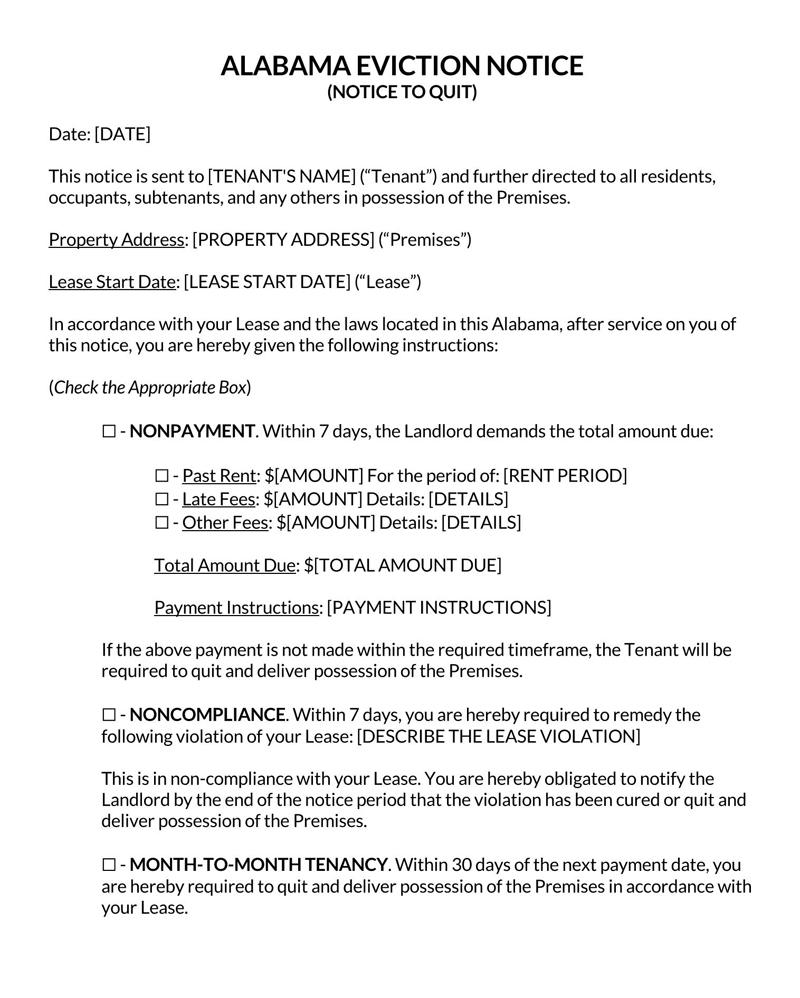
Alabama
Download: Microsoft Word (.docx)
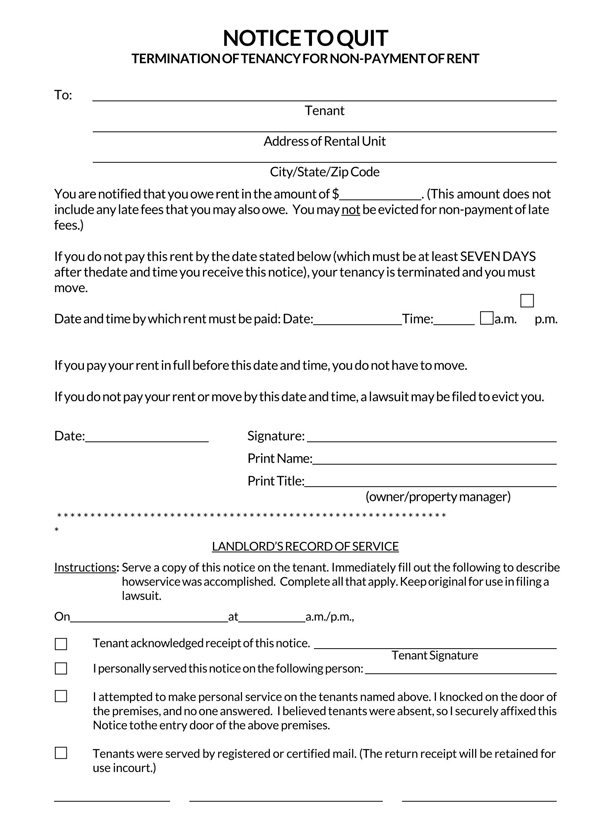
Alaska
Download: Microsoft Word (.docx)
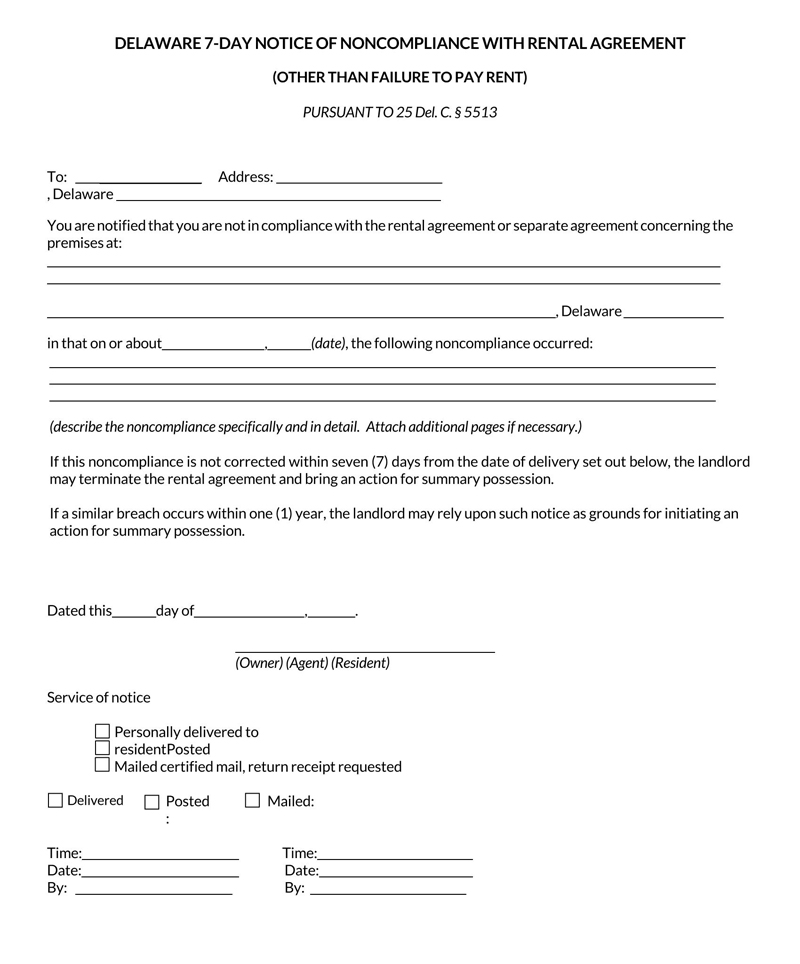
Delaware
Download: Microsoft Word (.docx)
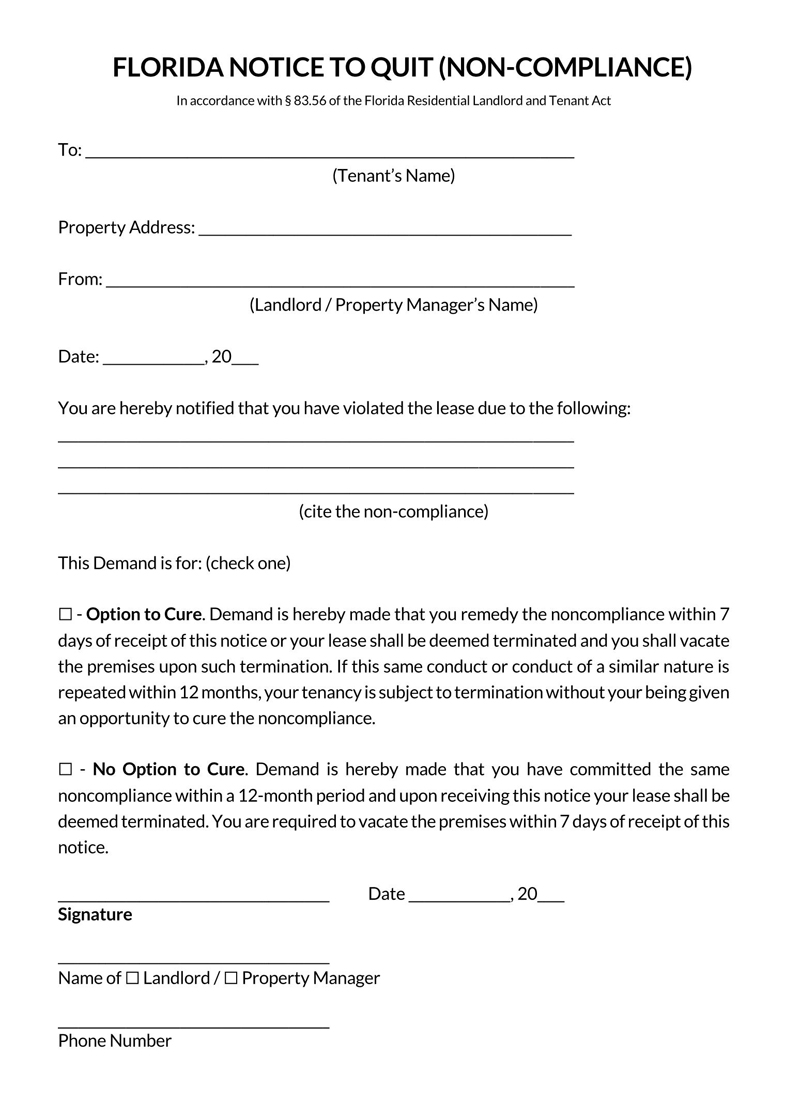
Florida
Download: Microsoft Word (.docx)
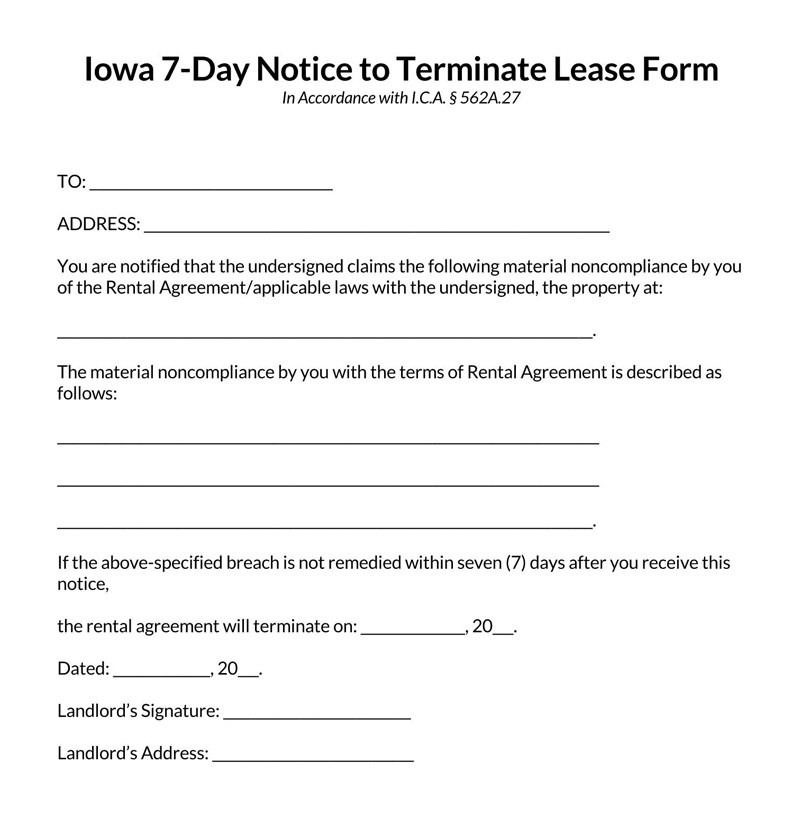
Iowa
Download: Microsoft Word (.docx)
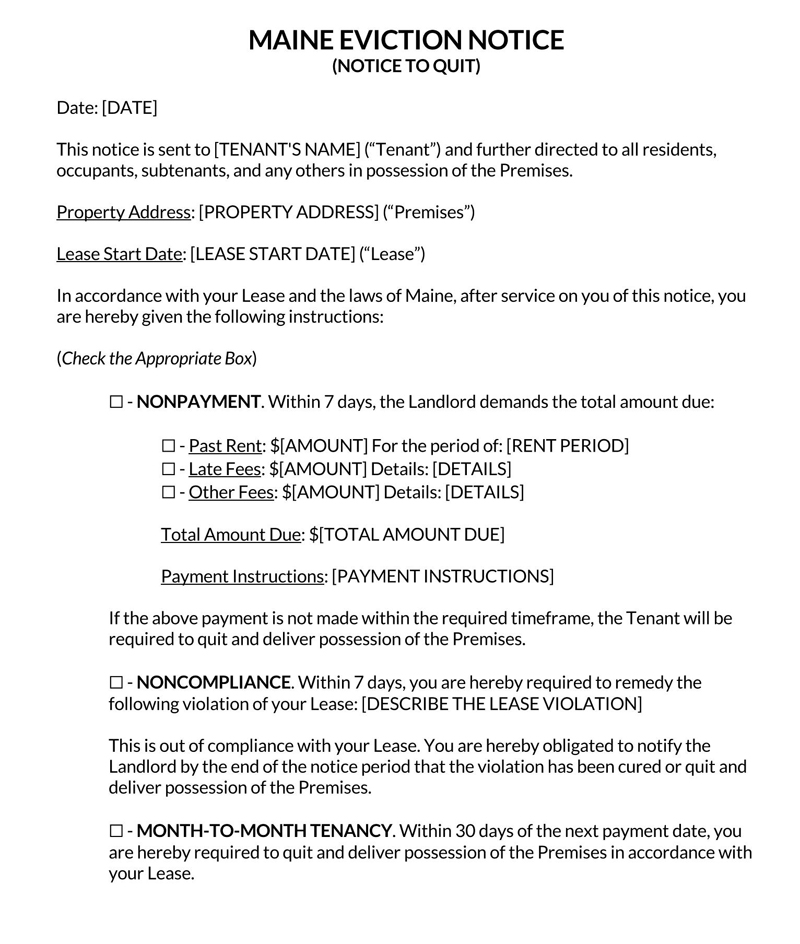
Maine
Download: Microsoft Word (.docx)
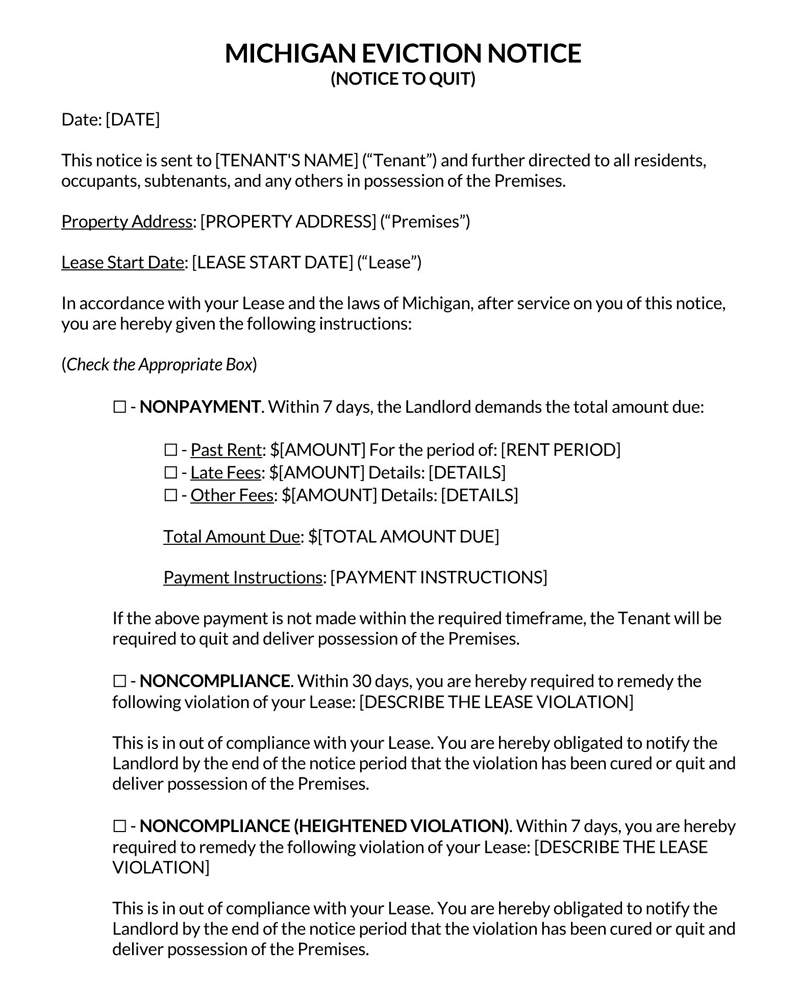
Michigan
Download: Microsoft Word (.docx)
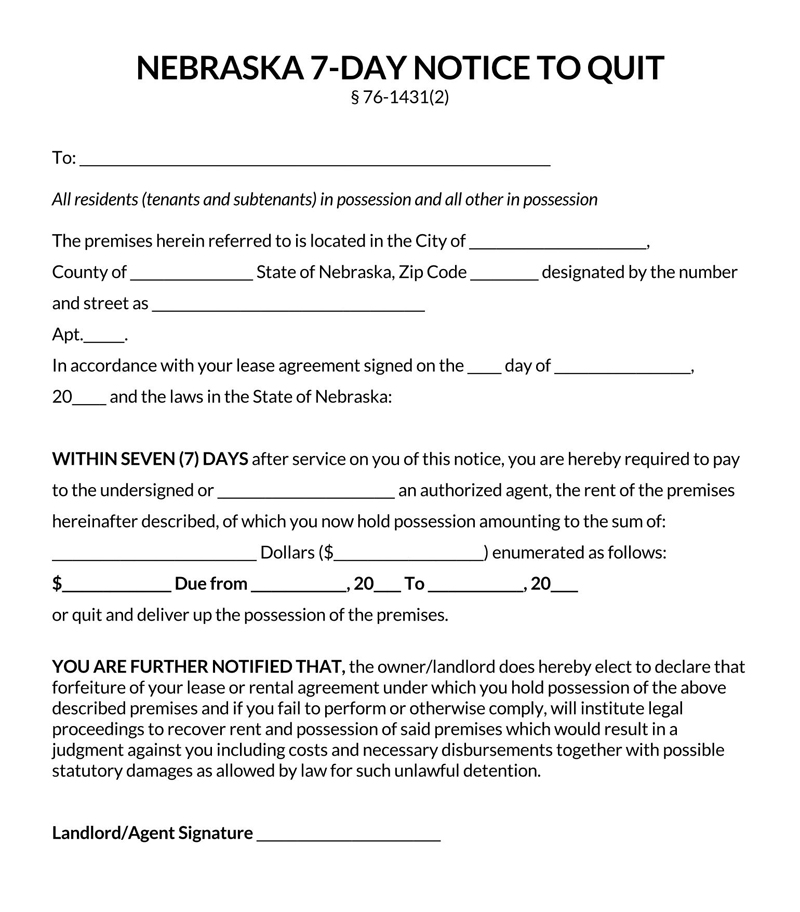
Nebraska
Download: Microsoft Word (.docx)
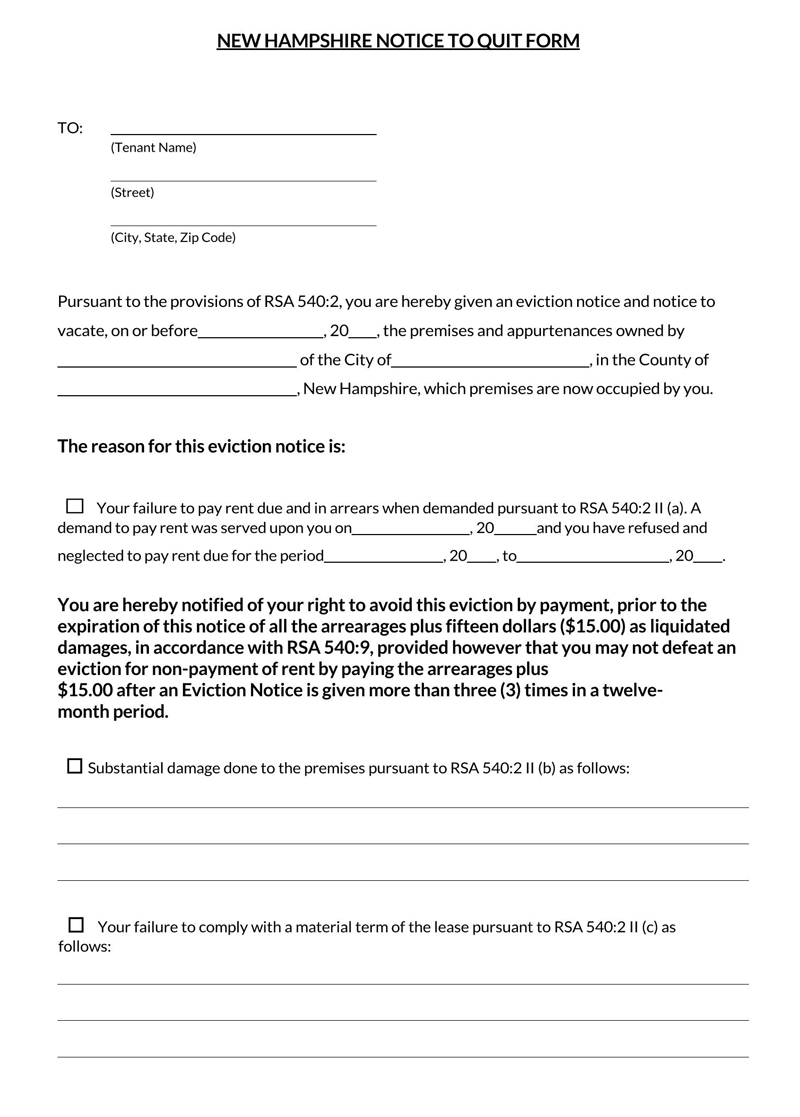
New Hampshire
Download: Microsoft Word (.docx)
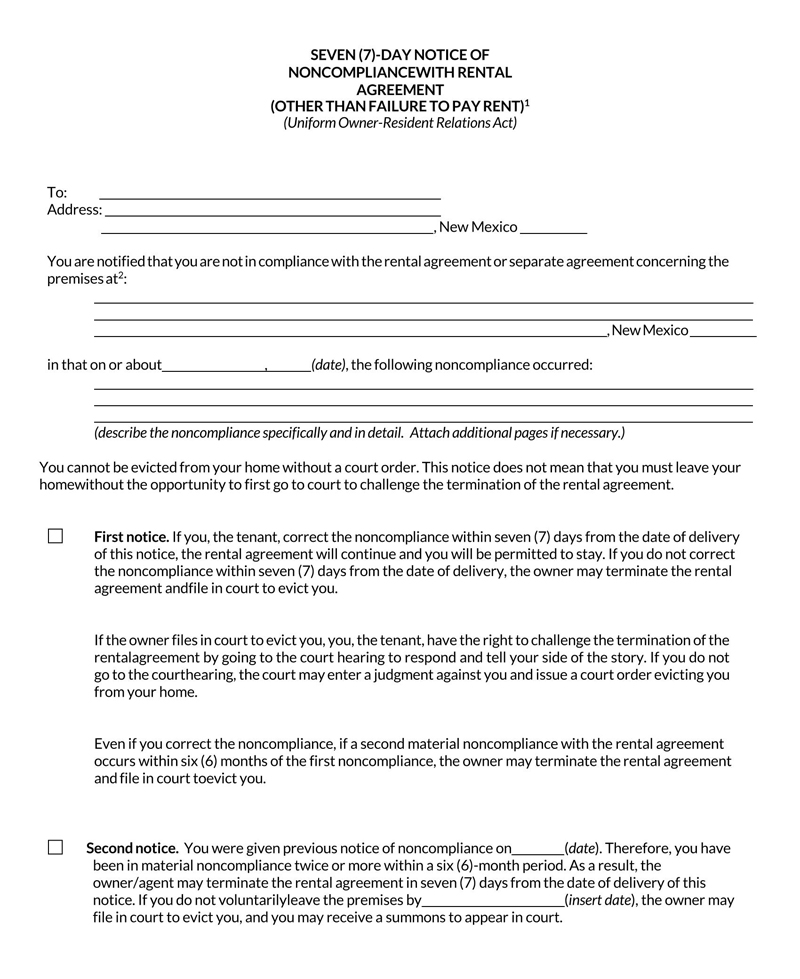
New Mexico
Download: Microsoft Word (.docx)
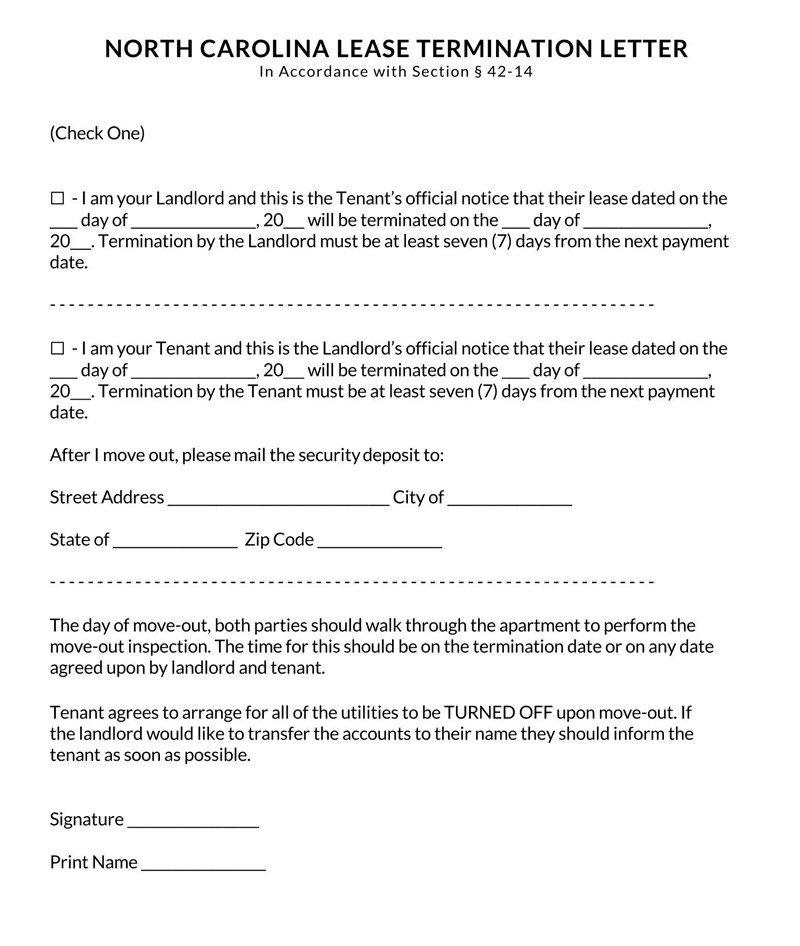
North Carolina
Download: Microsoft Word (.docx)
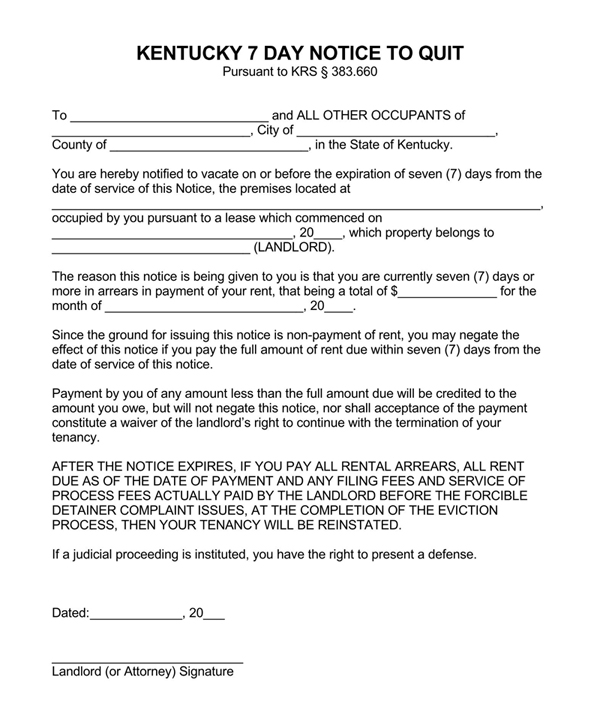
Kentucky
Download: Microsoft Word (.docx)
Three-Day Vs. Seven-Day Eviction Notice
When evicting tenants from a rental unit, landlords use various types of eviction notices to deal with non-compliant tenants. Such notices may include the three-day or seven-day eviction, which generally performs similar functions. Even so, there are a few significant differences between the two notices that landlords should be aware of.
The three-day eviction notice is commonly served to tenants who fail to make their agreed-upon monthly rent payments. This notice can also be issued to tenants who pay rent inconsistently, informing them that failure to remedy the action within the three days may result in termination of the rental agreement and eviction through the legal proceedings.
On the other hand, the seven-day eviction notice is served to tenants for not complying with the tenancy agreement terms. This type of eviction notice gives the tenant seven days to comply with the notices’ requirements or move out of the premises, failure to which the landlord may seek legal action against them.
How to Get a Seven-Day Eviction Notice Form
Writing an eviction form from scratch can be a daunting task. This is why we have provided our readers with free downloadable templates which can be customized to suit the reader’s unique needs. Our free templates are professionally formatted, which means that you don’t have to worry about designing the form, and they include all the critical elements.
Your only task is to review the various templates available on this site, verify your relevant state laws regarding the eviction process, download a template that suits your needs, read through it to understand what it entails, fill it out appropriately then issue it to the non-compliant tenant.
How to Fill the Seven-Day Eviction Notice
When writing/filling out an eviction notice, landlords must ensure that the eviction form is clear, precise, and includes all the relevant information to make the process as smooth as possible. Landlords will also want to be sure that they are providing the eviction notice legally by completing all the necessary steps.
Below is a detailed and procedural guide on how to effectively write or fill out a seven-day eviction notice:
Verify the residence location according to the state laws
Before filling in the notice form, ensure that the selected seven-day eviction notice form is authorized for use in the state where the property is located. Verification of the relevant state laws regarding evictions ensures that you conform to state requirements, thus avoiding the possibility of future litigation issues which might be costly.
Fill in the tenant’s details
The next step involves providing the details of the tenant to whom the eviction notice applies. This information should be supplied in the header of the eviction form or template. Information to include in this section includes the name (s) of the tenant, the rental unit they occupy, and their address information.
After providing this information, enter the original lease date, the date the rental agreement was signed, and include detailed information about the rental property, including the unit number, street, city, and zip code.
Specify the reason for eviction
The third step of writing/filling the form includes outlining the reason (s) for evicting the tenant, which may include failure to pay rent, engaging in criminal activity on the rental premises, termination of the month-to-month tenancy agreement, violating any term (s) on the lease agreement, etc.
Each reason provided should have detailed information; for example, if the reason for eviction is due to missed rent payment, list the dates the tenant missed the rent payment, the total rent arrears, and any applicable late fees or processing fees. Additionally, make sure that the reason for eviction is legitimate and legal in the jurisdiction of the rental property.
If the landlord believes that the reason for eviction is curable, the form should clearly state what the tenant can do to fix the violation and avoid the eviction.
Verification of rental agreement violation notice
Eviction notices usually include a section known as the ‘Certificate of Service’, which the landlord and the courts use if a FED is filed. This section confirms that the tenant received notice of their rental agreement violation following the relevant state laws.
Thus, the landlord must verify this section by supplying their signature, if they will deliver the notice personally, or have their representative (the individual serving the notice to the tenant) sign it.
Sign the document
The property owner should then sign the document to bring it into effect. Once the document is signed, it can be served to the tenant. In most states, eviction notices can be issued to tenants in any of the following ways:
- The landlord can hand-deliver the notice to the tenant or have their agent or professional courier deliver it to the tenant
- The landlord can, in person, issue the notice to any adult tenant living on the rental unit and listed on the rental agreement
- Put the notice on the property, usually on the front entrance of the rental premise
- Mail the eviction notice with a return receipt
note
State laws differ depending on the state, and therefore, depending on the area the residential unit is located, a landlord may need to serve the notice in a specific way, for instance, have a local law enforcement post the notice or obtain a court order to issue the notice to the tenant.
At the end of the seven days, when the tenant receives the seven-day eviction notice, they shall have either remedied the violation, if applicable, or moved out of the rental property. The landlord should make the appropriate follow-up. If the tenant has neither complied nor vacated the premises, the landlord may file an eviction lawsuit against the said tenant.
Free Template Available
Following is a professionally crafted seven-day eviction notice template for you:
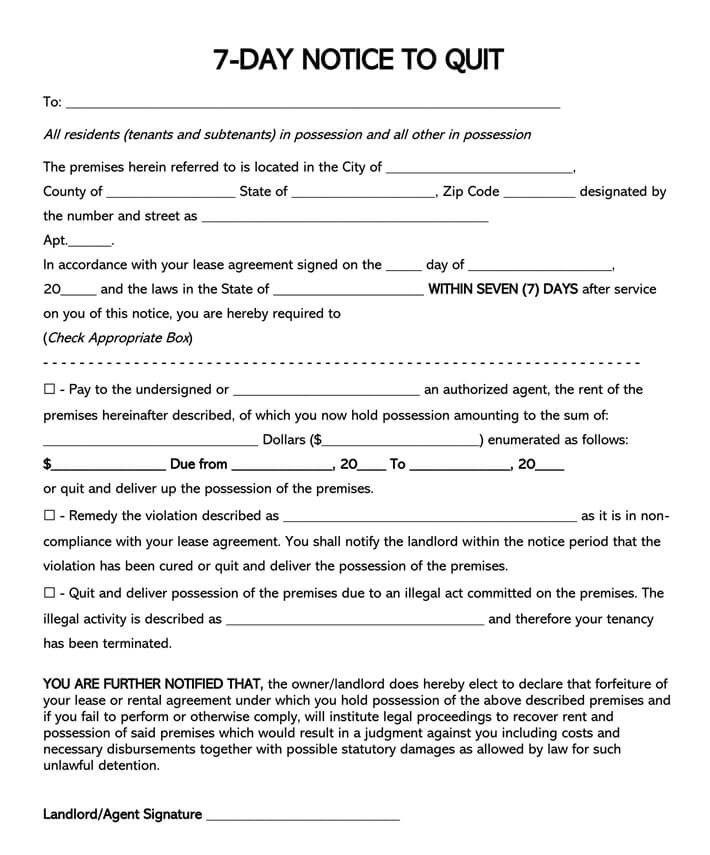
Key Takeaways
- An eviction is a court-ordered removal of a tenant from a property where they reside.
- Evictions can result from non-payment of rent by tenants, non-compliance with the lease agreement, and termination of a month-to-month lease agreement to enable the landlord to repossess the property.
- The eviction process must begin with the landlord issuing a notice to the tenant in a three-day, seven-day, or 30-day-eviction notice form. In either of these cases, the landlord must conform to the applicable state laws concerning issuing eviction notices to tenants.
- An effective notice form must include the tenant’s details, the type of notice being issued, the reason for eviction, a date on which the notice will come into effect, a certificate of service signed by the issuing party, and the landlord’s signature. If a tenant does not fix a violation indicated on the notice, a landlord can seek Forcible Entry and Detainer through a district court, small claims court, or housing courts.

